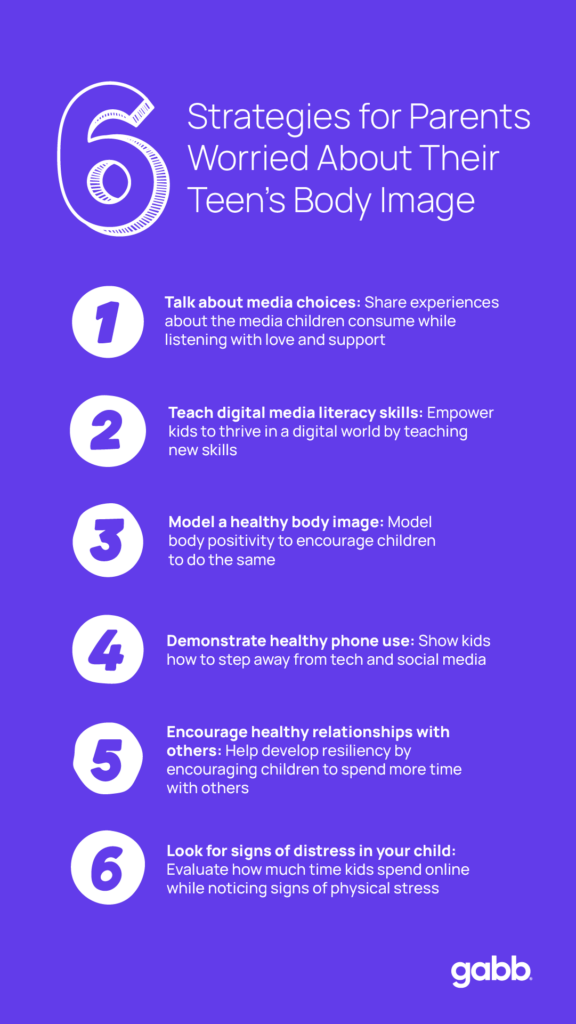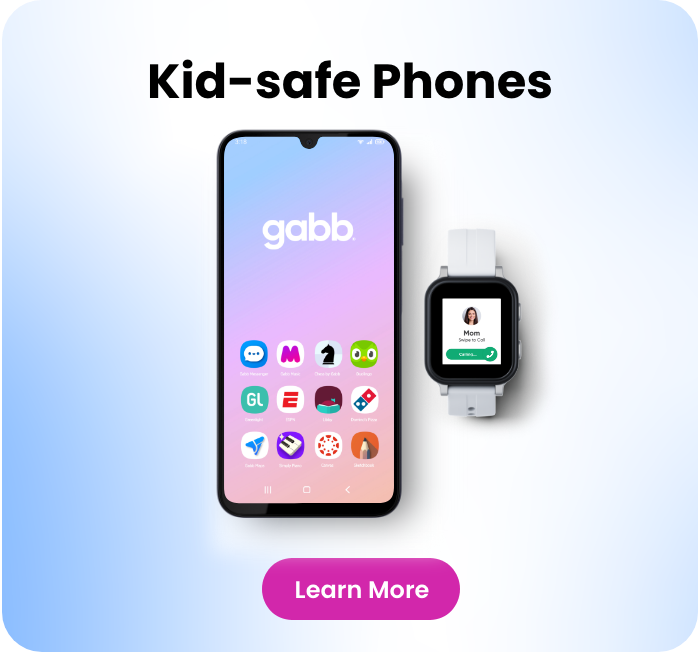Updated – Originally published May 25, 2022
The average teen today spends almost 7.5 hours a day on screens — and that’s not counting screen time dedicated to schoolwork.
Over 80% of young people say they use social media “daily” or “almost constantly.”
With mental health issues in young people continuing to rise, including significant increases in body dysmorphia and eating disorders, parents are right to ask what effect social media has on their kids.
The Broad Effects of Social Media on Teens
Excessive social media use has been linked to various mental health conditions, such as low self-esteem, lack of patience, problems regulating emotions, antisocial behavior, emotional distress, depression, skewed body image, and eating disorders.
While some social media companies are moving in the right direction with increased parental controls, they’re far from fixing these issues.
Social media platforms maximize:
- The time users spend on the app
- The social reach of their platforms
- How often users engage with the app
Children are left feeling:
- Uneasy about the amount of time spent on social media
- Afraid of social exclusion if they take a break
- Pressure to alter their behavior to get validation and self-worth from the app
How Does Social Media Influence & Impact Body Image?
Numerous studies suggest that social media has direct negative effects on body image. And the risks are higher for teenage girls.
The effects of image-based social media platforms (TikTok, Snapchat, and Instagram) are clear and significant.
The bad news is that these are exactly the platforms becoming increasingly popular with kids, with about 60% of teens regularly using Instagram and Snapchat.
The Damaging Effects of Sexual Images on Teen Body Image
The pervasiveness of sexual imagery on these platforms makes them particularly dangerous. Exposure to sexualized images is problematic for several reasons, including heightened objectification.
When girls see pictures of sexualized women, this results in self-objectification.
These pictures and videos change how we see ourselves and make us increasingly aware of how we compare to others.
Comparison is the thief of joy.
Theodore Roosevelt
Image-based social media platforms still promote the sexualization of women more than men, which may make young women more at risk for negative body image.
However, young men aren’t immune to self-objectification and comparison. Studies show that men are becoming more sexualized on social media as well, and scholars predict the same destructive outcomes.
Social Media & Body Image: The Problems of Comparison
Social media negatively affects body image because it leads to comparison — the consideration of the similarities or dissimilarities between two people. It can quickly lead to self-resentment, self-criticism, and self-dissatisfaction.
Of course, comparison was around long before social media, but the comparisons people make on social media platforms are worse than in-person correlations in at least three ways:
- They are made outside of a person’s social group and demographic
- They are made with impossible beauty standards
- They provide direct feedback (i.e., likes, comments, follows)
We’ll explore all three facets of social media comparisons below:
1. Comparison to adults
Teens compare themselves to people in different developmental stages through their social media accounts.
Comparing themselves to their peers is damaging enough, but it’s worse when they compare themselves to images of fully developed adults.
Young people begin to internalize unrealistic standards about their appearance despite having fewer years of development and different body shapes.
2. Comparison with false reality
No one can match the doctored images on social media, but teens (and many adults) have not developed the resilience to recognize how real life has been edited out of the content.
Influencers often use heavily edited, filtered, or outlier images that are not representative of the average person. Photoshop, airbrushing, and “facetuning” are widely employed, leading to altered faces and bodies.
Notwithstanding the enormous followings actors, models, and influencers enjoy, the extremely rich and famous make up only a small fraction of the population. Their standard of physique and beauty often comes from a whole team of makeup artists, professional photographers, and editors.

Even if a child were to notice these factors — though unlikely — their brain would still struggle to internalize the difference. This is where body dissatisfaction can set in.
Teens these days are aware that social media influencers and models edit their content, and that social media is not reality. However, research has indicated that “social comparison takes place outside awareness and affects explicit self-evaluations,” meaning that no amount of self-talk or reassurance can bypass the part of the brain that does the comparison.
3. Comparison fuels chasing “likes”
Finally, social media exacerbates comparison because it provides direct and immediate feedback such as likes, comments, and shares. This phenomenon is called “social proof” when we look to external validation to measure our worth.
When young people feel they receive less feedback than their peers or famous people, their self-worth can decline. To get more likes, comments, and shares of their own, they begin to imitate the “successful” posts they see.
This often means they may begin to apply filters, show more skin, or start extreme diets to look like the people they view, admire, or envy.
Chasing likes is futile because what they’re seeing is not real, and they will never be able to match this false standard.
Social Media & Eating Disorders
Body dissatisfaction degrades mental health. It can result in teenagers feeling insecure, self-conscious, anxious, or depressed. Furthermore, kids who feel they do not measure up are afraid to take healthy social risks and spend more time “in their heads” than those with a healthy self-concept.
It can also lead to eating disorders.
Many people recovering from eating disorders can trace their beginnings to social media.
What starts as a search for weight loss strategies can lead to content that encourages extreme dieting. The next step can be joining groups or following pages that encourage eating disorders.
We’ve covered this more in depth in our article, Teen Eating Disorders: The Impact of Dangerous Sites.
Six Strategies for Parents Worried About Their Teen’s Body Image
As parents, we can mitigate the negative impacts of social media. Even though there is no easy solution to battle negative body image, knowing that we have power can be encouraging.
Experts recommend six strategies for helping your teen embrace body positivity:

1. Talk about media choices
We can use social media to engage our kids in conversations about the media they consume.
Consider discussing content that portrays violence, substance abuse, body image, or sexuality. Ask them how content like this makes them feel. How does it affect how they see themselves and others? What are some strategies they use to protect themselves? Who do they contact for help, and why?
When we ask these questions, we can listen with love and support and make space for children to share their actual experiences.
Despite being inexperienced or sometimes needing help, kids often feel capable and crave respect.
2. Teach digital media literacy skills
Kids are safer when we empower them instead of sheltering them. We can do this by teaching them digital literacy skills.
Digital media literacy is the skill set needed to thrive in the digital world. It includes self-awareness, understanding intent, internet safety, personal boundaries, online etiquette, skepticism, and empathy.
These skills can help a child feel less scared and make better decisions when confronted with adverse content online.
You don’t need to be an expert yourself to teach your kids this critical skill set. A big motivation for Gabb Now is helping parents do this job. There are other great resources online that can also help, like CommonSense Media’s Resource Center.
3. Model a healthy body image
How we treat and use our bodies can send our kids subtle non-verbal messages. We can model body positivity when we treat our bodies well, speak highly of ourselves, and focus on the habits that help us feel good rather than just look good.
None of us have done this perfectly, and that’s okay. It’s never too late to tell kids we want to turn over a new leaf. We can even enlist their help by asking them to point out when we inadvertently talk negatively about ourselves.
By showing what it looks like to love oneself, we can help children be comfortable in their own skin.
4. Demonstrate healthy phone use
One of the chief predictors of problematic teen social media and phone use is the way we, as parents, use our phones.
In his December 2021 health advisory on protecting teen mental health, the Surgeon General called for parents to be the “best role model [they] can be.”
He encouraged parents to model how to step away from tech and social media.
Beyond simply modeling healthy phone use, he talked about how important it is to protect our mental health — seeking help when needed, getting enough sleep, exercising regularly, eating balanced meals, and maintaining regular routines.
We can always shift our ideas in a healthier direction and show kids that we are willing to break habits that have caused problems.
5. Encourage healthy relationships with others
Children need supportive adults and uplifting friends to develop resiliency.
Parent-child relationships are strengthened by spending time doing things kids enjoy.
We can build their confidence by asking for their help, praising their efforts, and expressing gratitude.
Provide help when needed, and consider trying hobbies together that are new to both of you.
6. Look for signs of distress in your child
A child experiencing stress can show symptoms like moodiness, withdrawal, anger, less interest in activities they used to enjoy, poorer school performance, secretiveness with digital media, or changes in eating and sleeping habits.
Being aware of the stressors in a child’s life and on the lookout for warning signals can better position us to help them.

We can evaluate how much time teens spend online. Is their screen time displacing opportunities for healthy activities like seeing friends, reading, sleeping, physical activities, and extracurricular events?
Is the digital content adolescents consume meaningful and constructive? How would they answer that question themselves?
Moving Forward
Remember, you don’t have to do it all on your own.
If you are worried about your teen’s self-image but aren’t sure what to do, don’t be afraid to seek help from doctors, teachers, school guidance counselors, parents of your teen’s friends, and other family members.
Parents may also consider taking tech in steps with their children by providing them with a kid safe device that can’t access harmful social media apps.
What do you think? Has social media had any affect on how you see your body or how your kids see their bodies? Let us know in the comments below!










Success!
Your comment has been submitted for review! We will notify you when it has been approved and posted!
Thank you!